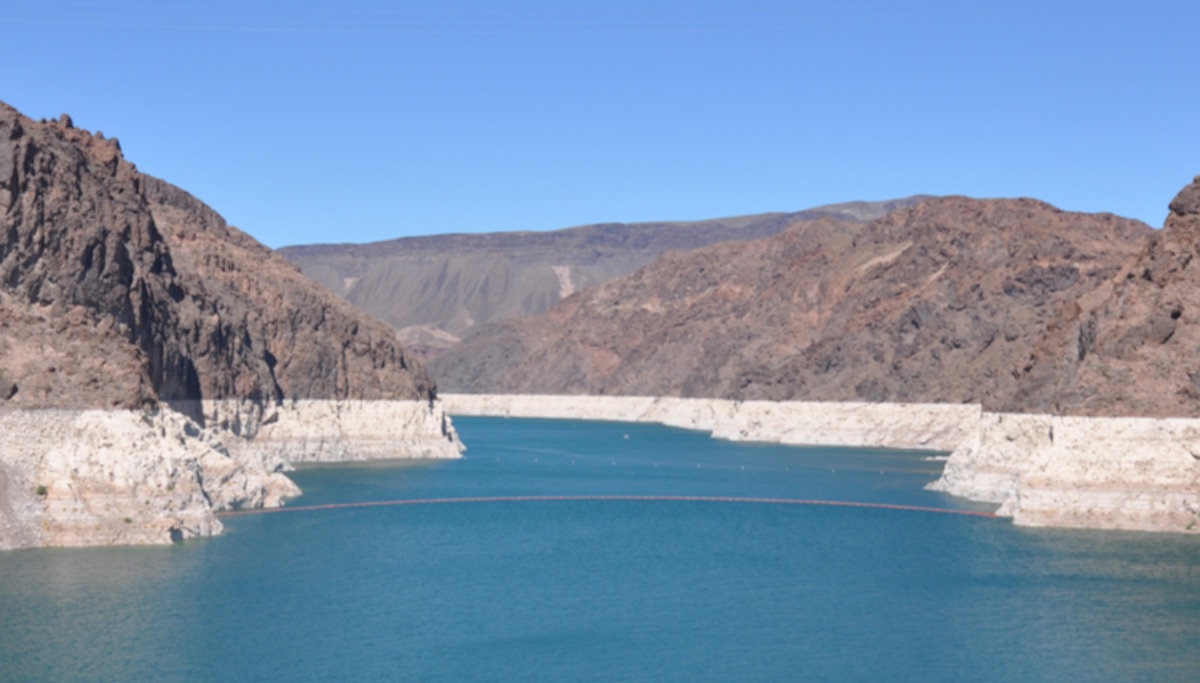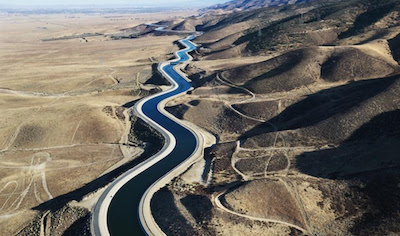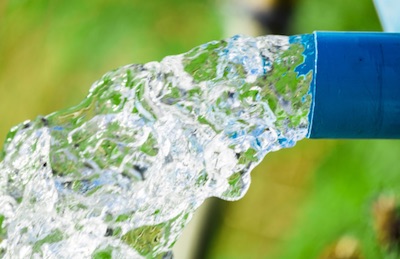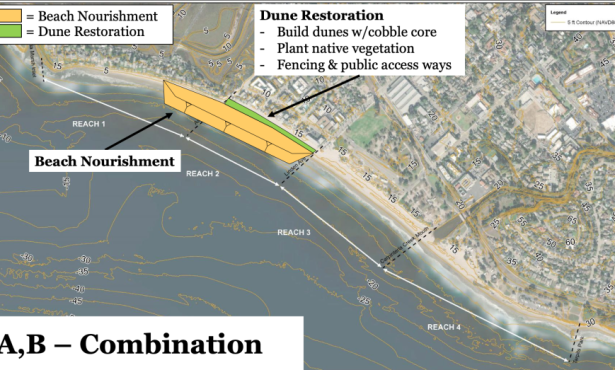County Board of Supervisors Proclaims Local Emergency Caused by Drought Conditions
Protecting and Ensuring Santa Barbara County’s Water Supplies

On July 8, Governor Newsom added Santa Barbara County to the list of California counties experiencing a drought and subject to his emergency proclamation initially declared on April 10, 2021. On July 13, the Santa Barbara County Board of Supervisors proclaimed a local emergency caused by current drought conditions within the county.
Proclaiming the existence of a drought emergency enables the County and water utilities to take immediate actions to mitigate and respond to the current drought conditions. It is important that measures are taken now to mitigate the impacts of drought to ensure the resilience of our drinking water systems.
According to the U.S. Drought Monitor report, more than 30 percent of California is in exceptional drought, the most severe of the Monitor’s four categories. About 80 percent of California is in extreme drought or exceptional drought.

Building and managing a reliable water system includes anticipating and planning for extreme weather and weather-related events, such as droughts, floods and wildland fires. It also considers estimates of future population growth, and projections of water use for people, manufacturing, agriculture and a host of other factors. It also used to rest on two key assumptions: that there is always more supply to be found, somewhere, to satisfy growing populations and water demand; and that the climate isn’t changing. These two assumptions are no longer true.
Fresh water is a scarce commodity. Most of the world’s population who have never gone short of water take water availability for granted. Water supplies are diminishing while demand is soaring, yet few people are aware of the true extent of fresh water scarcity, confused by the huge expanses of oceans, lakes and icecaps covering the Earth’s surface. In all, barely one percent of all the world’s fresh water is easily accessible.
Historically, water has been at the center of much of this world’s conflict and suffering. Water is a valuable commodity due to droughts and overuse, and like all valuable assets, water needs expert management of resources guided by policies and regulations. Water resource management is the activity of planning, developing and distributing the optimum use of water resources. Ideally, water resource management considers all the competing demands and allocates water on an equitable basis.
Where Does Our Water Come From?
When you turn on the tap and water flows, do you know the source of that water? In most communities, water supplies are a blend of local groundwater, storm runoff and recycling, such as desalination. However, nearly 27 million California residents also rely on state water supplies originating in Northern California that are stored and conveyed in a series of pipes, pumps, dams and reservoirs from the Bay Delta; across the Central Valley, coasts and desserts; and down to San Diego County.
Locally, Santa Barbara County residents receive water from the sources mentioned above, including storm runoff, the State Water Project (state water), recycled water and desalination, delivered through a variety of water purveyors, generally municipal, private and special district water departments and agencies. Most of the water used in north county comes from groundwater and state water, while the communities of Santa Ynez, Ballard and Los Olivos also receive some river water. Since groundwater level fluctuations are cyclical and sensitive to overdraft, groundwater withdrawal is closely monitored.
Water deliveries from the State Water Project are used primarily as a supplemental supply with amounts that will vary each year. Santa Barbara County began receiving water from the State Water Project in 1997. Most recently, in April 2021, as the contract holder for the State Water Project with the California Department of Water Resources, the Santa Barbara County Flood Control and Water Conservation District approved Amendment 21 and Resolution No. 21-73 aimed at protecting the county’s regional water supplies.

Amendment 21 allows for greater flexibility to manage state water. Resolution No. 21-73 generally requires that prior to selling State Water Project water outside of Santa Barbara County, local water purveyors first offer the water to the other water purveyors within the county at a reasonable price and demonstrate that sellable water can be replaced by other water sources, i.e. reclaimed water, desalination or other local water supplies. These principles allow regional water supply to be managed through time with droughts in mind and for the benefit of all county residents.
There are Four Major Reservoirs Located in Santa Barbara County
Cachuma Reservoir is owned and operated by the U.S. Bureau of Reclamation (USBR), Twitchell Reservoir is owned by the USBR and operated by the Santa Maria Valley Water Conservation District, Gibraltar Reservoir is owned and operated by the City of Santa Barbara, and Jameson Reservoir is owned and operated by the Montecito Water District. Water is delivered to our south coast via three tunnels through the Santa Ynez Mountains.
An additional local source is desalinated ocean water, which is not dependent on rainfall. The process of removing the high concentration of salts and minerals from ocean water requires costly treatment plants that use a lot of energy and leave behind a brine that must be properly disposed of. As technology advances and other water sources become less available, desalination will become more cost-effective and a larger percentage of locally-controlled water supplies.
Role of the County Water Agency and County Flood Control and Water Conservation District
The Santa Barbara County Water Agency was established by the state legislature in 1945 to control and conserve storm, flood and other surface waters for beneficial use and to enter into contracts for water supply. The Water Agency administers the contracts with the U.S. Bureau of Reclamation-owned Cachuma and Twitchell Dam projects and participates in Groundwater Sustainability Agencies.
In Santa Barbara County, groundwater basins that are subject to the Sustainable Groundwater Management Act (SGMA) include all medium and high priority basins as defined by the California Department of Water Resources. Under the SGMA, agencies in each of these basins were required to form Groundwater Sustainability Agencies.

Additionally, the Water Agency prepares investigations and reports on the county’s water requirements, groundwater conditions, efficient use of water, and other water supply related technical studies, and manages a number of countywide programs including the Integrated Regional Water Management Program, Regional Water Efficiency Program, and winter cloud seeding program.
The Water Agency was originally empowered under California Water Code to cooperate and contract with the state and federal governments on behalf of municipalities and water districts within Santa Barbara County. It has since been empowered to acquire property, condemn for the purpose of right-of-way, and assume indebtedness either as principle, guarantor, or underwriter.In 1955, the Santa Barbara County Flood Control and Water Conservation District was created by the state legislature with the primary purpose of providing flood protection and conserving storm, flood and surface waters for beneficial public use. The District has held the contract for the State Water Project with the California Department of Water Resources since 1963 and paid all capital costs for the project through 1986. It subsequently transferred certain rights and responsibilities under the contract to the Central Coast Water Authority, while retaining the contract itself. The District has broad powers to prevent the exportation of water from the county.
In order to wisely and efficiently use all available water supplies, the Water Agency and the District, as well as a number of local water purveyors, operate water conservation/water use efficiency programs directed at helping consumers minimize waste and stretching threatened water supplies. For information, go to waterwisesb.org/.



You must be logged in to post a comment.